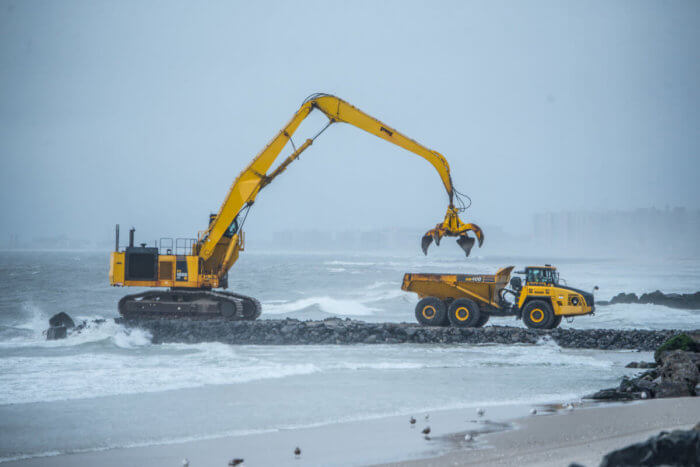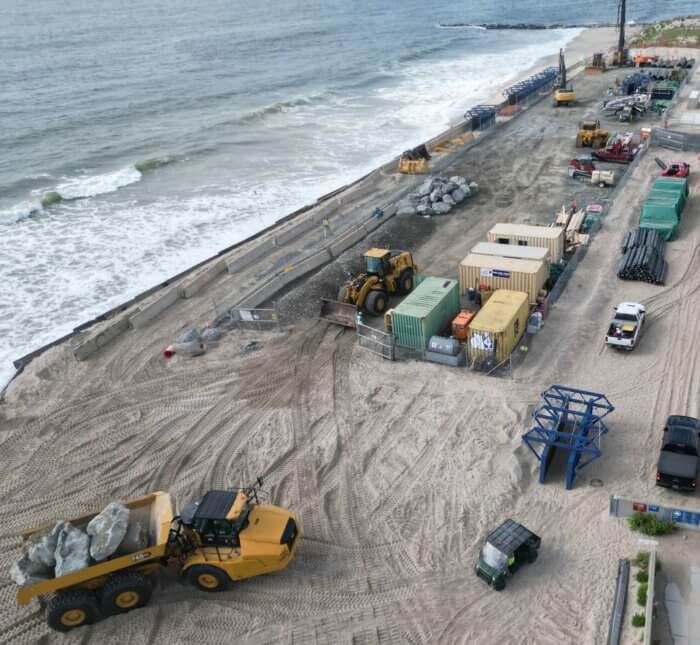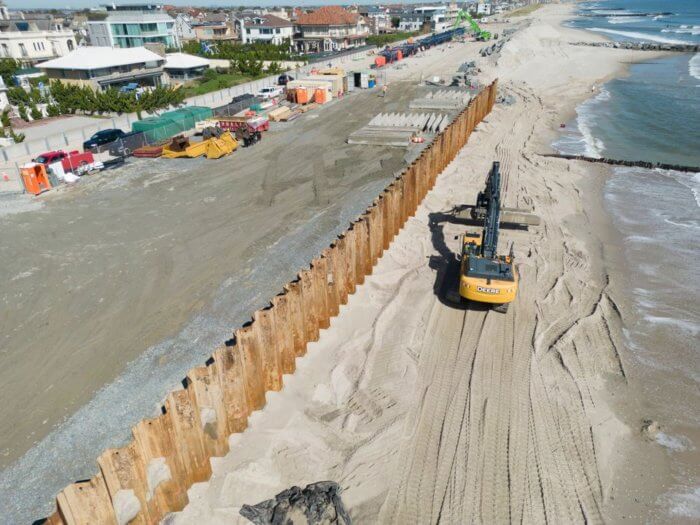It’s been 10 years since Superstorm Sandy pulverized the Rockaway peninsula after coming ashore on the evening of Oct. 29, 2012. The 10-foot storm surge destroyed more than a thousand homes and businesses, splintered the iconic Rockaway Boardwalk and knocked the A train out of action for months as 1,500 feet of track were swept away, leaving the coastal communities along the 11-mile peninsula isolated from the rest of the city.
“It was truly a terrible experience for our communities, and we can still feel the effects of the storm to this day, ” state Senator Joseph Addabbo said. “Looking back a decade later, what I remember most about the days, weeks and months after the storm is the way we all came together as a community to help those who were affected.”
He said Sandy tore through the Rockaways leaving homes destroyed, businesses demolished, public spaces were unrecognizable, and lives were lost.
“Since the storm, we have worked on the state level to strengthen our coastal communities and are working to implement storm mitigation measures in our waters so that when the next storm hits we are prepared. In addition, we are working toward being a clean energy state to help reduce the effects of climate change. I will never forget that day and the damage we faced, but I will also never forget the strength of our communities to rally around each other and come back even stronger.”
Neponsit resident Tom Farley, 82, will never forget the flooding from that night.
“The ocean came right down the streets and where I live on the Jamaica Bay side, the waves were cresting and crashing right into my home,” Farley told QNS. “Luckily, I’m a swimmer. I was the chief lifeguard in Rockaway in the early ’60s, so I was able to handle it, but my house was flooded and it destroyed many homes that were close to the ocean.”
Farley retired from the FDNY following 26 years and he has chronicled the $702 million Rockaway Coastal Storm Risk reduction project by the U.S. Army Corps of Engineers.
“A lot of people don’t quite know what’s going on with this project and I just try to keep them up to date,” Farley said. “I talk with the engineers and surveyors and the supervisors. People who don’t live here in the Rockaways don’t really understand how vital this project is.”
Construction on the six-mile-long flood mitigation system began in 2020 with reinforced steel sheet pile dunes, new and expanded stone groins that act like jetties, and beach renourishment along the Atlantic Ocean shorefront.

“I was just up there today looking at the construction again,” Farley said. “The quality of the building they’re doing is very impressive but they worked all summer and they got three blocks done. Three blocks is a long way from seven miles, right?”
He is still studying the details of the much larger $52 billion Coastal Resiliency Plan by the Corps of Engineers that would fortify coastal protections with construction slated to begin in 2030.

“That proposal is about keeping the water out of our communities and making it safer in the future,” Farley said, noting the project is not yet funded and will have to go through several layers of bureaucracy on the city, state and federal levels before any shovels hit the sand.
Addabbo supports the plan to protect the coastal communities from future storm surges.

“This tentative plan is the multi-basin storm surge barriers with shore-based measures — which manages coastal storm risk through several measures, including a storm surge barrier at the entrance to Jamaica Bay,” Addabbo said. “This $52.6 billion plan has been worked on and advocated for by community leaders over the years and would create a system of flooding features to reduce the risk of coastal storm surge, while also minimizing environmental impacts to the surrounding communities. I look forward to seeing the next steps of this plan to protect our neighborhoods from damages caused by storms and hurricanes.”



































